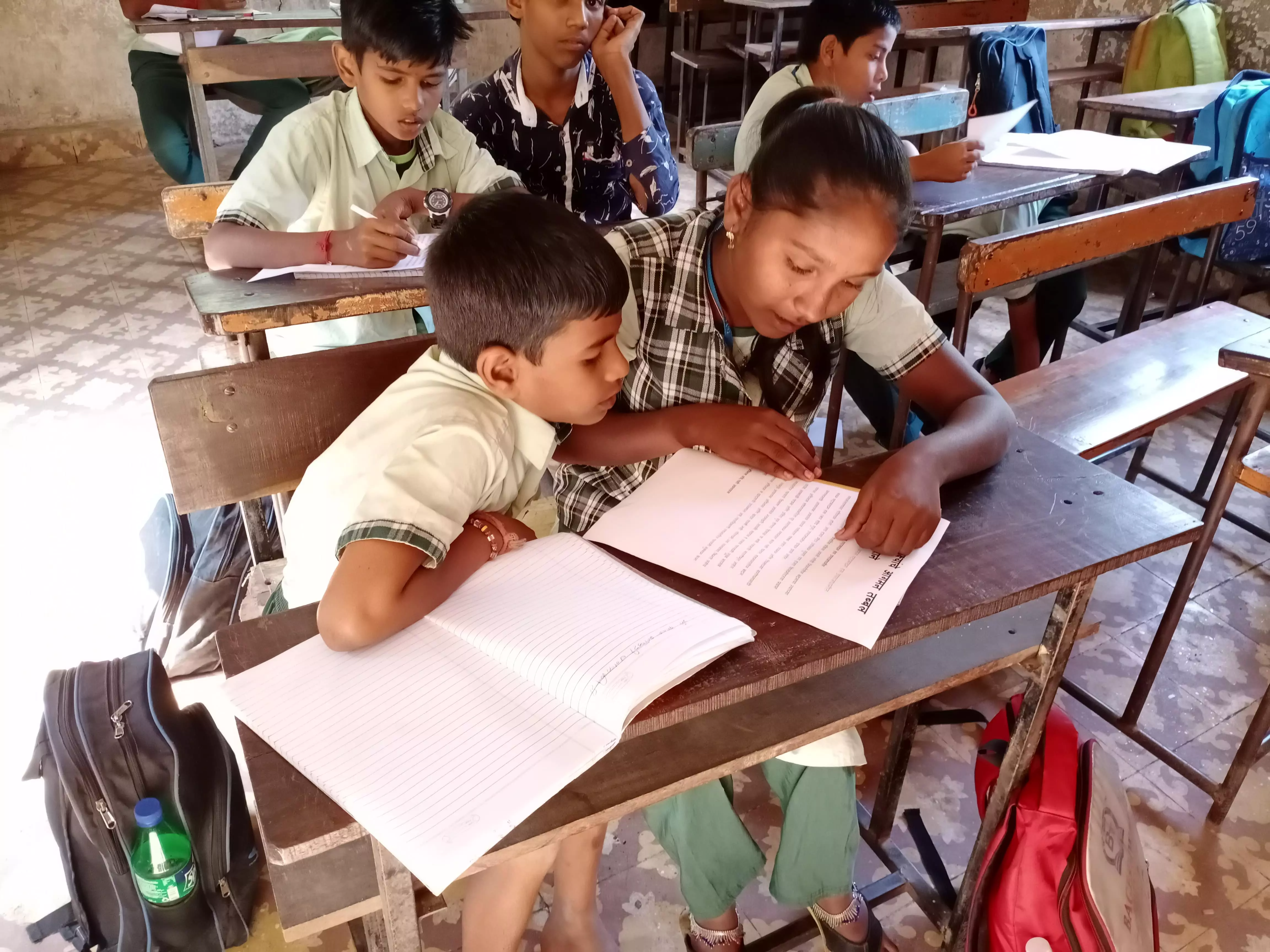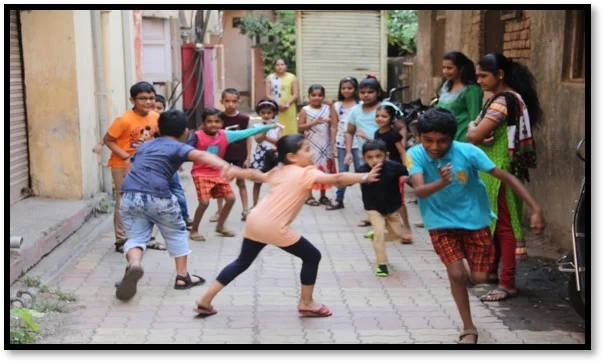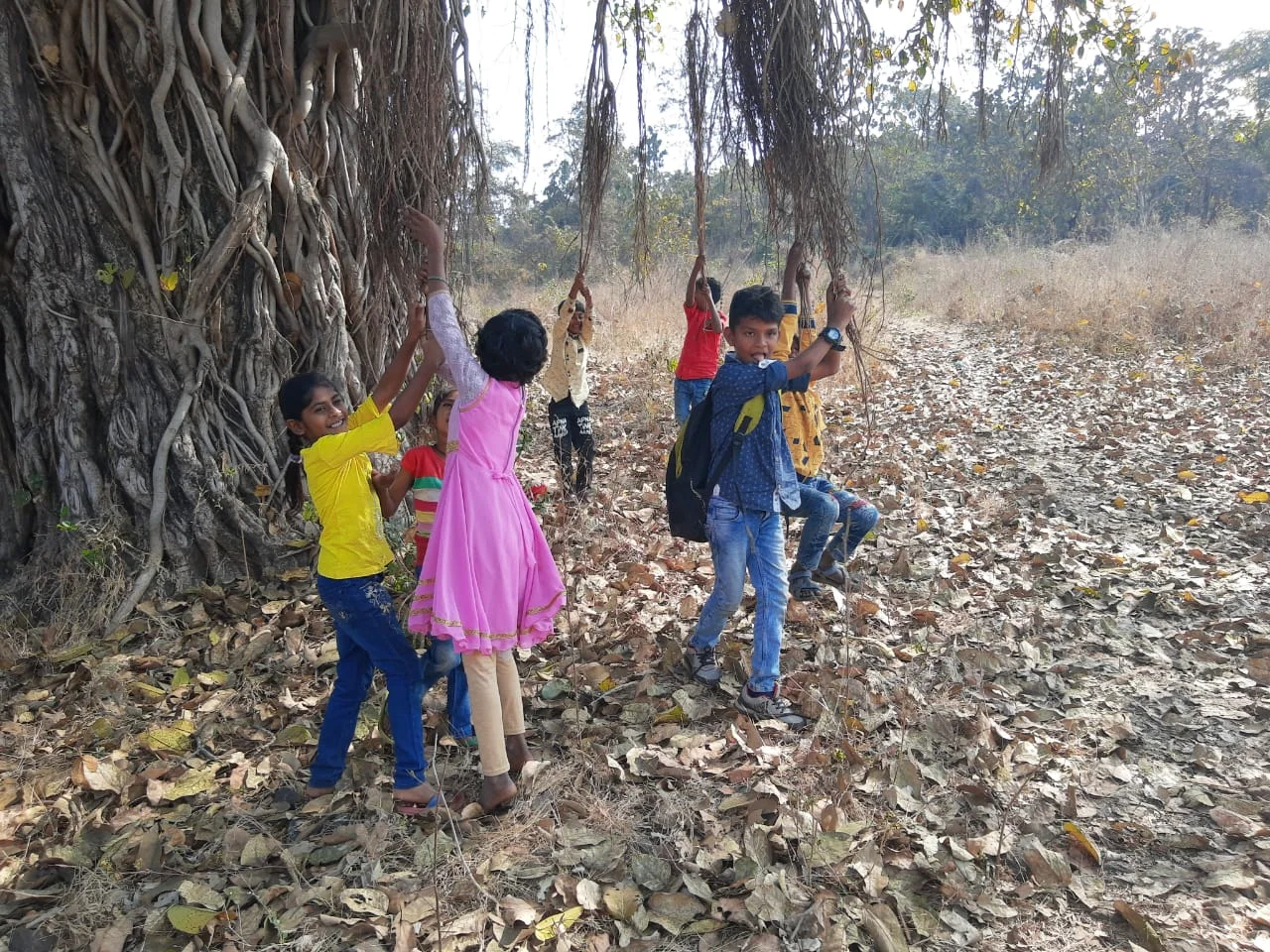


The children that SAJAG works with belong to urban poor communities where parents are engaged primarily as garbage pickers, domestic workers, drivers, contractual labour or similar other unorganised work on daily wages in the informal sector. None of the parents have had the opportunity to seek education beyond primary school. Many have had absolutely no education, making their children first generation learners. Therefore, students at SAJAG have no help or support for school work, at home. Moreover, these children are enrolled in semi-private or government- aided schools where teachers are over burdened with a vast school curriculum, no time to supervise individual progress and a standard teaching pedagogy. Administrators, on the other hand, lack the resources to improve the infrastructure; teacher to student ratio; or invest in innovative pedagogical methods. As a result of the above factors, many of these children drop out of school and among those who continue; completing school and performing consistently is a struggle.



Complementary learning models developed by SAJAG help students engage meaningfully in academics. We have developed academically engaging learning centres for students from urban poor households. Our learning centres work parallel to school and complement the contribution of primary school teachers.
The objective of the learning centre is to improve students’ reading, writing and communication in Marathi & English as well as basic mathematics. This will help them cope with school curriculum and perform better in high school and thereafter.
When we established SAJAG, we observed that children enrolled in the upper grades of primary school could not read simple Marathi texts. Our findings corroborate with ASER reports published every year. According to the ASER Report for Maharashtra in 2015, 7.3% students from Grade 3 cannot read ‘aksharas’ (letters of the alphabet) and 25% of Grade 3 students can only read texts meant for Grade 1. As this problem remains unaddressed it accumulates into massive learning deficits. This then aggravates to persistently poor performances, lack of interest and indifference towards school and studies. Finally students drop out of school prematurely.
Our model comprises of complementary learning centres (CLCs) and a Library, which enable students to participate in academics meaningfully. This two-fold approach is founded on the principle of complementing whatever is taught in school, at the CLC, albeit employing different pedagogical methods. The ‘Enread’ programme at the library initiates children to the world of books, engages them in games and augments learnings in school and the CLC through self-exploration.
To build the foundational skills of students i.e., basic literacy, numeracy, comprehension, communication as well as social-emotional skills
To recognise ‘multiple intelligences’ and improve learning levels of students by tapping on these through innovative teaching methods
To help students better engage in school activities and support primary school teachers by complementing school curricula at the CLC
Thus, when pupils progress to secondary school, they are better equipped to cope with the syllabus and perform to their potential.
We started with seven students in 2016, moved to twenty-five by year-end and now have a hundred and six students across centres and primary school grades.
We conduct independent research studies, thoroughly scan research papers, journal articles, surveys and best practices all over India to develop content for the complementary learning centres (CLCs). Tremendous effort is invested in the books, games and reference material stocked in our library.
Equal Opportunity: Each student is provided the opportunity to speak, discuss, present and debate her/ his point of view in the classroom with respect
Guided Practice: Once students learn by observation, they are encouraged to experiment and practice with support and/ or direction; commensurate with their learning style and capacity to absorb
Independent Learning: Having had the opportunity to observe and practice, students gain the confidence to experience hands-on learning through independent activities in the CLCs and exploration in the library
Multi-sensory, experiential learning based on multiple intelligence: We employ varied teaching methodologies in accordance with different intelligences by way of field trips, mind-maps, flowcharts, learning props, charts and audio- visual aids

The marginalisation of urban poor got further aggravated during and in the aftermath of the pandemic. The communities that we engage with were no different; households became visibly worse off to the extent that many were compelled to cut down one meal. The immediacy of deprivation, malnutrition and impending hunger made it imperative to provide food-grains at the earliest. We obtained basic groceries like oil, salt, sugar, lentils, rice and wheat flour in two phases from April to June, to supply basic nutrition for about ten days each.
Migrant workers residing in our geographic location of Kalyan started their homeward journey on foot. We provided food, water and snacks to a hundred and fifty migrant labour on a daily basis.
In all, SAJAG’s Covid-’19 relief comprised of food grains and groceries to athousand and twenty-five local families and food to approximately a thousandand eight hundred migrant labour walking to their hometowns.



